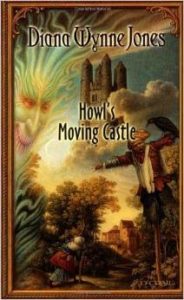As an actor those are words you never want to hear because it means you’re not doing your job, you’re not performing the scene with enough emotion to make it feel real to the audience. As a writer we’re susceptible to the same mistake. Except it’s not necessarily our characters that might not feel real. It can just as easily be the conflict itself.
I realize that it may sound strange for a story’s conflict to be the thing that makes it real and interesting. It’s the reason we turn the page. We have to know if Harry Potter defeats the villain of the month! But if the conflict itself is only half of the equation. The other half — the half that makes it feel real and creates the tension — is how the conflict affects the characters internally.
Every action has an opposite and equal reaction is just as true in physics as it is in fiction. In a fight scene, when the villain throws a punch at the hero, if the hero doesn’t react, either by dodging or being knocked back by the blow when it connects, it’s not believable. Likewise if the young heartthrob dumps the heroine for no good reason. If the heroine doesn’t run away crying or punches them in the face (my personal favorite) then the whole scene falls flat. Without the reaction it’s like it didn’t happen at all. And the reaction doesn’t have to be physical. I’ll use the same examples again to illustrate what I mean. When the not-so-happy couple breaks up, their emotional reaction is just as important as the physical one that follows. Is the heroine angry? Is she in disbelief? Is her heart broken? Is the heartthrob sad? Are they defensive? Impatient? In shock that they’re about to get punched? It’s the same thing in the fight scene. Is combatant A frightened of their opponent or are they confident that they’ll win?
All of this detail isn’t just to fill out the scene and make it breathe. It also increases the tension in your story. All of that description and reaction takes time and that’s time in a critical moment of the story where your readers are waiting for big punch. All the while you’re bringing them deeper into the character’s mind. That punch isn’t being thrown at a stranger, it’s being thrown at them.
It continually amazes me how adding depth can solve so many problems at once. I almost want to call it the Swiss Army knife of writing. Granted, like any tool it helps having some experience using it. I mean you can’t cut cheese with a corkscrew…though it would be fun to watch someone try. Adding the wrong emotion or reaction will do more damage then good. But avoiding that pitfall is a subject for another day.




